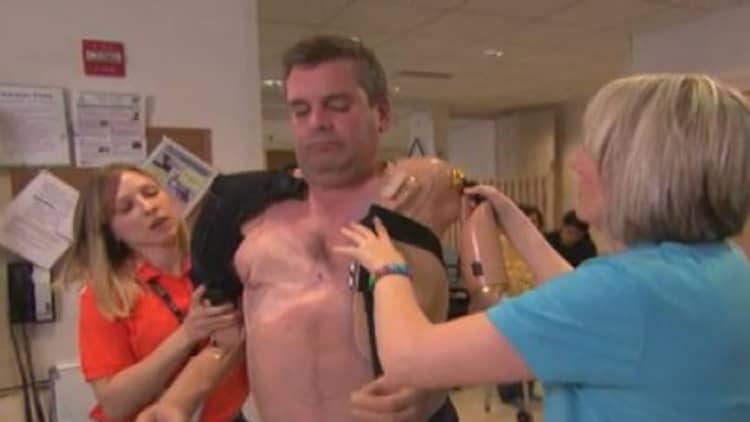
When electrical line worker James Young lost both his arms in 2010 in a workplace accident, he had joined the long, grim list of those people who lose a limb – up to a million a year according to the World Health Organization.
However, doctors and scientists at the Rehabilitation Institute of Chicago (RIC) are developing cutting edge prosthetics to improve the lives of amputees. Today, advances in technology are enabling amputees to ride bikes, grip bottles and even run.
The market is lucrative: Össur, one of the world's leading prosthetics makers, estimates that in 2012, the size of the prosthetic market in the U.S., EMEA and Asia regions was between $850-$950 million.
(Read more: Apps that make your home smarter)
"Development is accelerating at an unprecedented pace," Dr Levi Hargrove said in Episode 3 of CNBC's Innovation Cities. "We're moving from devices that just open and close the hands, using hooks that are operated when they [patients] shrug their shoulders, to articulated fingers."
Scientists at the RIC have developed a procedure, targeted muscle reinnervation (TMI), which reassigns nerves that controlled arms and hands to pectoral muscles.
After surgery, patients are fitted with a prosthetic arm and are given therapy to strengthen their core muscles and training on how to use the arms. Once these nerves are reassigned, people with upper arm amputations are able control their prosthetic devices by merely thinking about the action they want to perform.
(Read more: Can 'Big Brother' technology make cities safer?)
After a muscle transfer and nerve realignment surgery, Young is now ready to be fitted with prosthetics that will enable him to control his arms using his just his thoughts. "It's actually amazing, I actually feel these arms are part of me, and I'm running them, and [they're] not a foreign object," he said.
Developing cutting edge prosthetics requires time, and funding. The RIC's most recent advance, the development of the world's first mind controlled prosthetic leg, was aided by $8 million worth of funding from the U.S. Army's Telemedicine and Advanced Technology Research Center.
(Read more: Basque Country reaches out to the elderly)
This is, however, technology that will not only be usable and relevant now, but for many years to come. It benefits those who have lost their limbs as a result of domestic and work accidents, and has the potential to improve the lives of service men and women returning from conflict zones. Over 1,700 American soldiers have lost limbs in Iraq and Afghanistan while, according to the Amputee Coalition of America, 185,000 Americans lose a limb each year.
"What we like to do is really develop things that aren't just going to get shelved at the end of development, but find their way to benefit the people in need," Blair Lock, Director of Operations at The Center for Bionic Medicine of the Rehabilitation Institute of Chicago, said. "It's a buzz for us to be able to see our technology change the life of somebody," he added.
The significance of these advances, according to Hargrove, is huge. "This has never been possible before," he said. "There's an incredible opportunity to help many, many millions of people around the world with this technology. We're allowing people to do things that in some cases they haven't done for years, decades even."
Follow us on Twitter: @CNBCWorld




